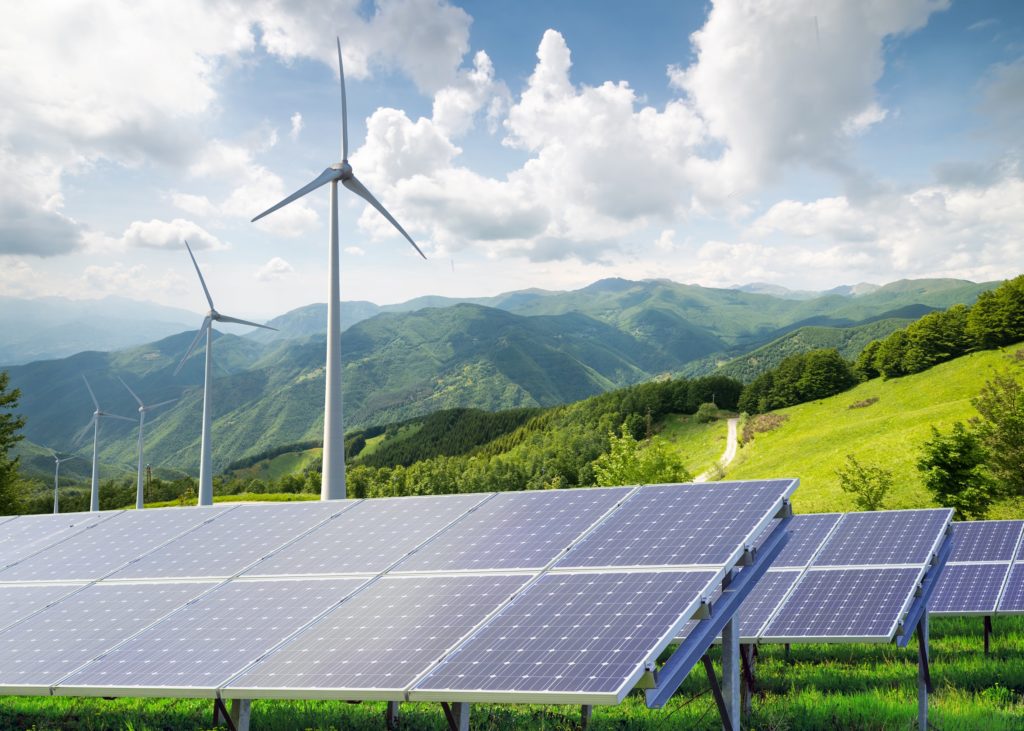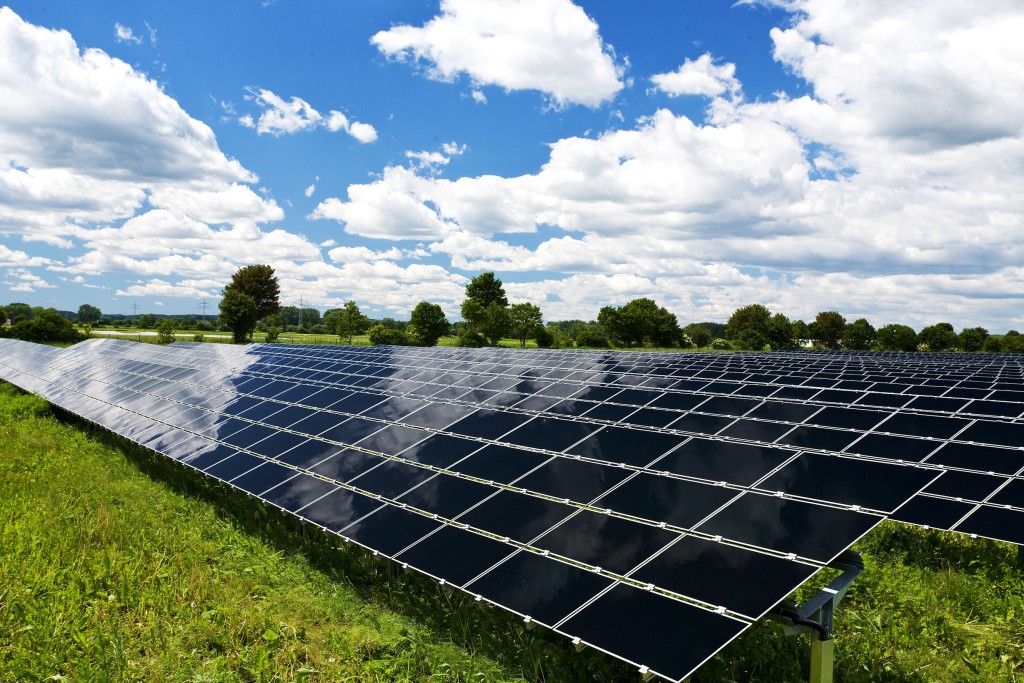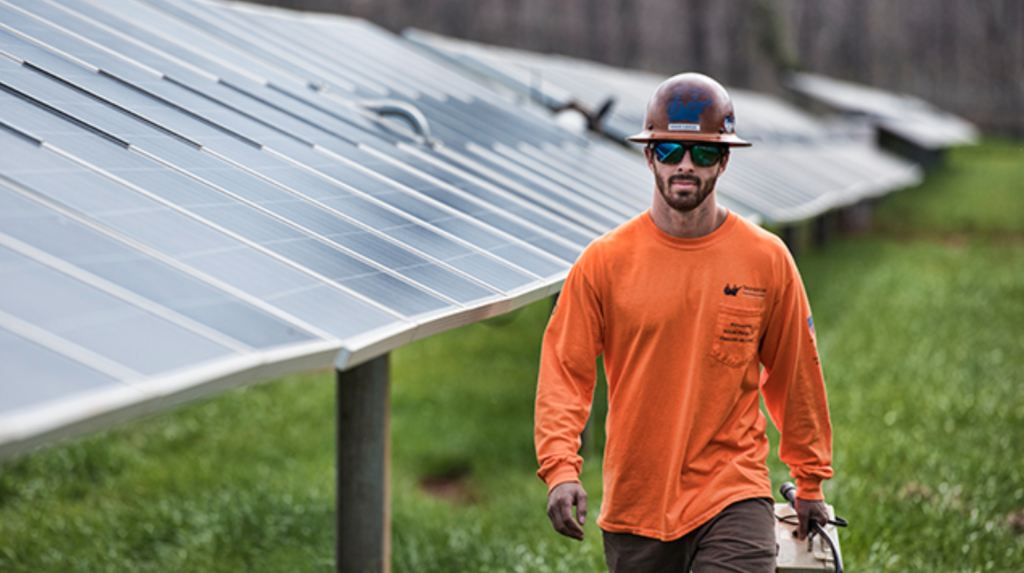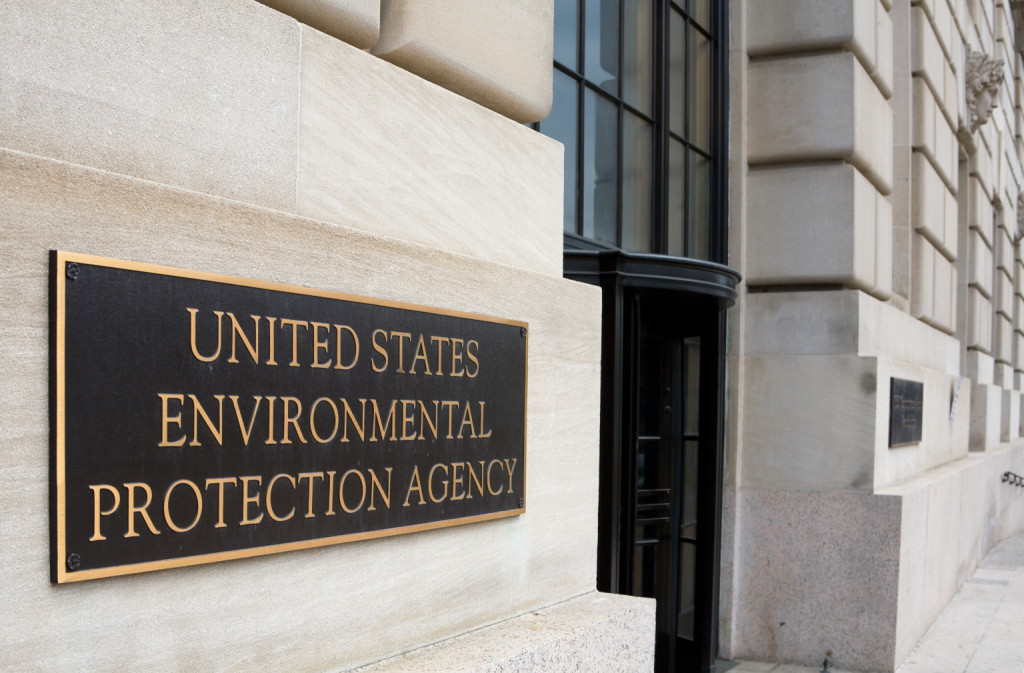Daniel Sutter: Is a renewable electric grid a mirage?

Reducing greenhouse gas emissions to curb climate change will require enormous sacrifice. The enormity of the required sacrifice suggests that we should have consensus on the goal before acting. Recent discussions of the Green New Deal have highlighted some of the required sacrifices, but I suspect that the full implications of an all renewable power electric grid remain obscure. The Green New Deal was sponsored by New York Congresswoman Alexandria Ocasio-Cortez and Massachusetts Senator Edward Markey. The proposal highlighted measures like a renewable energy electric grid, eliminating greenhouse gas emissions in transportation (including phasing out air travel), and creating a smart electric grid. Limiting atmospheric carbon dioxide to 440 ppm, the European Union’s goal, will require these changes and then some. Assessing whether aggressive mitigation of climate change is worthwhile requires recognizing the full cost. An all renewable energy electric grid appears feasible. Over thirty states already require a minimum portion of electricity generation from renewable sources; Hawaii will require 100 percent renewables by 2040. Renewable fuels are certainly costly, but the consequences go way beyond cost. Wind and solar power and batteries are the components of a zero emissions grid. Yet wind and solar generate power only about 30 percent of the time. Currently utilities rely on fossil-fuel-powered plants to provide backup; a zero emissions grid will require batteries. The Manhattan Institute report, “The ‘New Energy Economy’: An Exercise in Magical Thinking,” demonstrates the flaws of such an approach. One concern involves simply building enough wind farms and solar panels to meet electricity demand. In 2018, the U.S. had 1.1 million megawatts of electricity generation capacity, 62 percent from natural gas and coal. Due to intermittent production, we would need perhaps 3 million megawatts of wind or solar capacity for the grid. If we used only wind turbines, we would need a wind farm larger than Texas. We would need perhaps 1.5 million turbines, each requiring 150 acres for an undisturbed flow of air, or 350,000 square miles. Even this is almost surely an underestimate. Wind energy potential maps have already allowed use of the best wind farm sites. Electricity demand has been steadily rising and would jump further to charge the electric cars, trucks, and trains and eliminate gas and diesel powered vehicles. The battery numbers are also troubling. One year’s production of batteries from Tesla’s “Gigafactory” can store enough power for the U.S. grid for three minutes. The “New Energy Economy” report contends that 1,000 years of “Gigafactory” production would be needed to store just two days of power. Producing such quantities of turbines, solar panels, and batteries will use enormous quantities of fossil fuels. A standard wind turbine requires an estimated 900 tons of materials, including concrete and metal. The lithium, cobalt, nickel, and other needed chemicals for solar panels and batteries must be mined and transported. In addition, turbines, panels and batteries will need replacing periodically. The power grid has long operated on adding capacity to meet demand. Millions of decisions have been made based on this principle. We assume we can power our air conditioners, refrigerators, and computers, and soon charge electric cars in a timely fashion. Gas-powered generators provide backup as needed. A zero emissions grid will not just involve much more expensive electricity. The supply of electricity will be insufficient to meet the demand. “Smart” appliances will ration electricity by running only when electricity is available. After ensuring hospitals and fire stations have power, we may be unable to charge our cell phones and electric cars. The ripple effects will be enormous. How do we get to work if our electric car didn’t charge overnight? How will we heat and cool our homes? Could global supply chains still operate? The Green New Deal has highlighted some of the dramatic changes required to aggressively combat climate change. But I doubt that Americans understand the consequences of ending on-demand electricity. Daniel Sutter is the Charles G. Koch Professor of Economics with the Manuel H. Johnson Center for Political Economy at Troy University and host of Econversations on TrojanVision. The opinions expressed in this column are the author’s and do not necessarily reflect the views of Troy University.
Google plans solar energy to offset Alabama, Tennessee data centers

To ensure that electricity used by their new data centers in Alabama and Tennessee is matched 100 percent by renewable energy, Google has announced plans to purchase the output from two new solar farms. “Located in Hollywood, Alabama and Yum Yum, Tennessee, the two biggest solar farms will be able to produce around 150 megawatts each,” Amanda Corio, Google’s Senior Lead of Energy and Infrastructure wrote in a blog post. “These solar sites will be among the largest renewable energy projects in the Tennessee Valley region, and the largest solar farms ever to be built for Google. Thanks to the abundant solar power generated by these new farms, electricity consumed by our data centers in Tennessee and Alabama will be matched with 100 percent renewable energy from day one, helping us match our annual electricity consumption as we grow.” Data Center Dynamics reports that google has invested nearly $5 billion in renewable energy with more than 30 long-term contracts. The Alabama solar farm will be in Hollywood near Scottsboro and the data center, expected to be online later this year, will be near Huntsville.
Daniel Sutter: Sustainable solar energy

Oregon recently took back $13 million in tax credits awarded to SolarCity based on inflated costs reported on 14 solar projects. This is just the latest in a long series of legal issues for renewable energy companies. Our governments have encouraged solar and wind energy through tax credits, subsidies from tax dollars, and mandates. But perhaps letting markets and entrepreneurs work might be a better way to develop renewable energy to truly benefit America. One billion in tax dollars were spent on Oregon’s Business Energy Tax Credit program, which the state’s Department of Energy badly mismanaged. SolarCity (now part of Tesla Motors) was allowed to report costs far in excess of amounts paid for the 14 projects, receiving tax credits which were then sold to businesses with tax liabilities. Selling tax credits is a common practice; the legal concerns arose from the overstated costs. Unfortunately, this sounds like yesterday’s news. In 2017, SolarCity paid almost $30 million to the U.S. Treasury for employing the same accounting move rejected by Oregon. Solyndra received $535 million in Federal loan guarantees and was prominently promoted by the Obama Administration before going bankrupt in 2011. The U.S. Department of Energy Inspector General concluded that Solyndra officials deliberately overstated sales to secure the loan guarantees. And this year, solar panel installation company Legend Solar, which ranked 27th on Inc. magazine’s list of top startups for 2016, has failed to deliver new panels for customers or perform repairs on panels under warranty. Do these cases mean anything other than that some shady characters have run some solar power companies? I think so. First, government subsidies and mandates likely slow the detection of poor quality and fraud. Customers (which might be businesses themselves) provide the main line of defense against fraud. Homeowners who paid deposits for Legend Solar’s panels, for example, alerted state officials. And yet customers subsidized by tax dollars or forced by rules to use solar power may not discipline a failure to deliver products of expected quality. More significantly, subsidies and mandates may adversely impact technology. The transcontinental railroads illustrate the potential danger. In 1869, the Central Pacific and Union Pacific Railroads met in Utah, with a golden spike symbolically linking the nation. The transcontinental railroads were mostly built with generous government subsidies and large land grants and were an economic waste. The subsidized railroads went bankrupt and had to be rebuilt. Only, the Great Northern Railway built by entrepreneur James J. Hill without government subsidies, avoided bankruptcy. Government assistance affected railroad construction. The subsidized railroads were built on steep grades through the mountains, making the hauling of trains very costly; Mr. Hill selected more favorable grades and invested in spur lines to collect freight from surrounding communities. As economic historian Burt Folsom explains, this should come as no surprise. The Union Pacific and Central Pacific were in the business of collecting government subsidies, not railroads; they laid track to collect handouts, not to create a profitable business. The interjection of politics could additionally affect the individuals who become entrepreneurs and start businesses. As my Johnson Center colleague G. P. Manish and I explored in a 2016 paper, many of America’s great market entrepreneurs appear to have been motivated by what psychologists call the mastery motive, meaning the desire to excel at tasks; making money was almost secondary. Each purchase of a product by consumers in the market validates entrepreneurs’ desire to know they have mastered their business. Politicized markets offer a very different form of validation and may draw a very different set of entrepreneurs into an industry. From the energy shortages of the 1970s to concerns over fossil fuels’ greenhouse gases, politicians have seemingly had good reasons to encourage renewable power. Economically viable renewable energy would be a boon for America but will require solar and wind systems capable of creating value, not merely collecting government subsidies. Perhaps government should step aside and let market entrepreneurs develop renewable energy in an economically sustainable manner. ••• Daniel Sutter is the Charles G. Koch Professor of Economics with the Manuel H. Johnson Center for Political Economy at Troy University and host of Econversations on TrojanVision. The opinions expressed in this column are the author’s and do not necessarily reflect the views of Troy University.
EPA boosts amount of ethanol in gasoline supply

The Obama administration is boosting the amount of corn-based ethanol and other renewable fuels in the U.S. gasoline supply despite sustained opposition by an unusual alliance of oil companies, environmentalists and some GOP presidential candidates. The Environmental Protection Agency on Monday issued a final rule designed to increase production of ethanol to be blended with gasoline through 2016, a decision that could reverberate in Iowa’s crucial presidential caucuses. The agency said it will require more than 18 billion gallons of renewable fuels in 2016, most of it ethanol. The amount is less than was set in a 2007 renewable fuels law, but is more than was proposed by the EPA in May. The agency said that the demand for gasoline has risen since May, increasing the amount of renewable fuels that can be blended in. The decision doesn’t necessarily mean a higher percentage of ethanol in an individual driver’s tank, and isn’t likely to have much effect on gas prices. But it does mean there will a higher supply of the home-grown fuel overall. Janet McCabe, the acting assistant administrator for EPA’s Office of Air and Radiation, said the renewable fuels industry is “an incredible American success story” and the 2016 targets are a signal that it is growing. “It’s all about more choice and making those fuels more available” to consumers, she said. More renewable fuels are good news for farm country. But ethanol critics say the levels are too high. Oil companies have spent many years fighting the 2007 law, saying the market, not the government, should determine how much ethanol is blended into their gas. Environmental groups say that farmers growing large amounts of corn for ethanol are tearing up the land. And conservatives like Texas Sen. Ted Cruz, who is running for the Republican presidential nomination, call the government’s longtime support for ethanol “corporate welfare.” The renewable fuels law sought to address global warming, reduce dependence on foreign oil and bolster the rural economy by requiring a steady increase in the overall amount of ethanol and other renewable fuels blended into gasoline over time. The Renewable Fuel Standard, as it is called, sets out specific yearly targets. Since then, the EPA has said the standards set by the law cannot be fully reached due partly to limits on the amount of renewable fuels other than ethanol that can be produced. Next-generation biofuels, made from agricultural waste such as wood chips and corncobs, have not taken off as quickly as Congress required and the administration expected. Still, the new rule setting targets for 2015, 2016 and retroactively for 2014 would represent an overall increase in the use of renewable fuels. The new standards come as President Barack Obama and other world leaders are meeting in Paris to finalize an agreement to cut carbon emissions worldwide, and the administration says this will help achieve that goal. The new targets are a victory for the ethanol industry, which aggressively pushed back on a 2013 proposal that would have decreased the amount of ethanol mixed into fuel. At the time, the EPA said the amount of biofuel required would generate more ethanol than many engines can safely handle. Farm-state lawmakers – and some presidential candidates wanting to win over voters in farm states like Iowa – have strongly urged the EPA to meet the targets set out in the law. They have also successfully pushed back on calls from opponents to repeal the entire Renewable Fuel Standard. So far, the critics have had little luck getting past those supporters to change the policy in Congress. In the presidential race, Democratic front-runner Hillary Clinton has said she will seek to strengthen the standards, and her fellow Democratic candidates have also supported it. The issue has divided Republicans seeking the presidency. While some candidates like former Arkansas Gov. Mike Huckabee have spoken about maintaining higher levels of renewable fuels, others like Cruz have denounced the policy. Florida Sen. Marco Rubio has positioned himself somewhere in the middle, saying the standard should not be repealed because many have made investments in it but it should be eventually phased out. Iowa, host of the leadoff presidential caucuses next year, produces more ethanol than any other state, and the renewable fuel standard is a powerful economic and political issue. But as national security and the economy have eclipsed farming issues in many rural areas, some candidates like Cruz have felt comfortable criticizing it and have still fared well in the polls. In March, Cruz told an audience at an Iowa agricultural forum that he has “every bit of faith that businesses can continue to compete, continue to do well without going on bended knee to the government.” Republished with permission of The Associated Press.
State energy regulators approve renewable energy plan

The state Public Service Commission – responsible for regulating the state’s major public-private utility companies – unanimously approved on Tuesday a new plan proposed by energy giant Alabama Power that would add some 500 megawatts of renewable energy to the state’s portfolio over the next six years. It would allow the utility to stagger the new alternative energy’s distribution, prioritizing it for those who have expressed an interest in it without imposing its likely higher costs on those who prefer energy from cheaper, traditional sources like coal and natural gas. An executive for the company said in a release the plan is a win-win for energy consumers of all stripes. “This allows Alabama Power to offer renewables where they make sense for our customers,” said Nick Sellers, VP of Regulatory and Corporate Affairs for the utility. “We are pleased that the Public Service Commission has reviewed and approved this filing. We look forward to working with those customers who have interest in more renewable energy.” Though the proposal was spearheaded by AP, a number of other organizations ranging from industrial to environmental were involved in crafting it: Southern Environmental Law Center, the Southern Alliance for Clean Energy, the Alabama Environmental Council, JobKeepers Alliance, Alabama Industrial Energy Consumers, and the Gulf States Renewable Energy Industries Association were all present for the plan’s introduction, as were representatives of the state’s attorney general. The new plan will allow the utility to either build its own renewable projects or secure agreements to purchase renewable energy from elsewhere. Each project can be no larger than 80 megawatts, and the first project must be under construction within a year. State regulators retain the right to review all new projects and purchase agreements. The move expands upon the utility’s already extant efforts to encourage renewable energy consumption. Alabama Power customers already have the option to buy renewable energy credits, which represent the renewable energy attributes of energy the company is producing or purchasing. Customers can purchase RECs for as little as $1.25 per month. They can purchase as many RECs as they like – enough to match all their energy use, or more.


